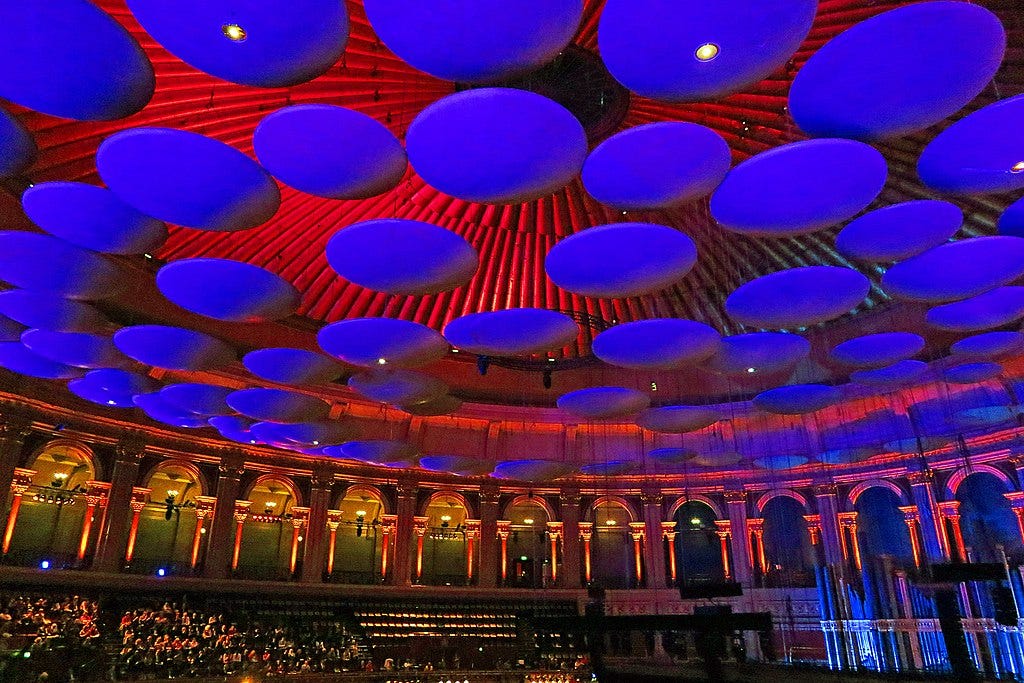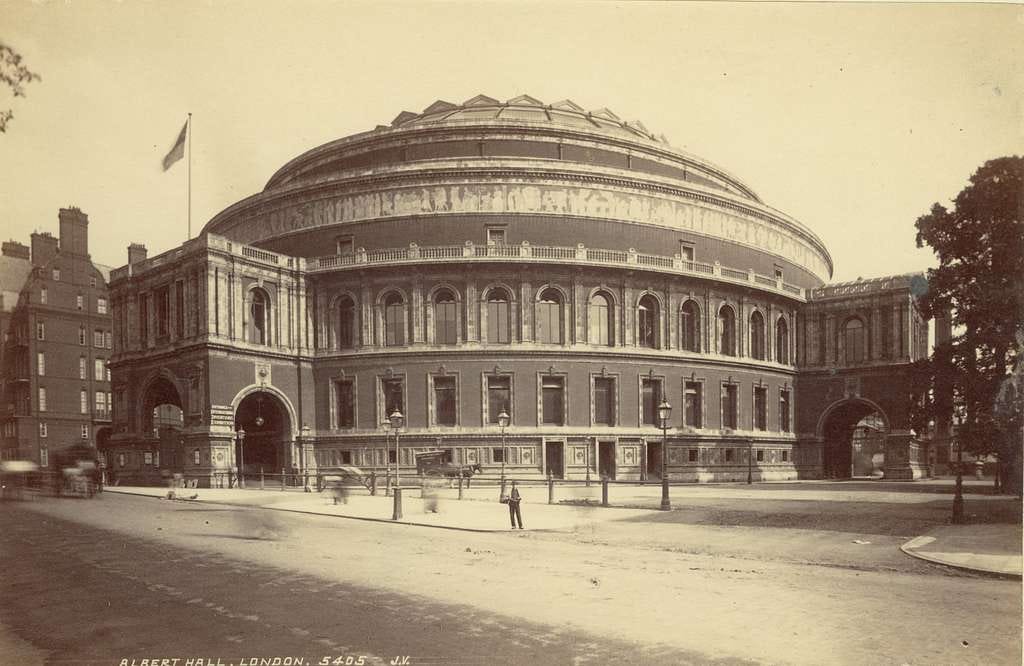Five... moments from the surprisingly chaotic history of the Royal Albert Hall
'Scanty dress was more the rule than the exception'
Hi and welcome to your weekend newsletter…
Sorry for the late send-out of this edition — a combination of holiday flights, construction work, and the heatwave (I’m 10% slower at everything when it tips 32°C) means that the newsletter I’d planned to send at the weekend is still very much a draft.
So instead this week’s edition is adapted from the archives, with a handful of moments from the Royal Albert Hall’s — surprisingly eclectic, surprisingly chaotic — history, to coincide with the opening of the 2025 Proms season. Includes the ongoing elephant ban, smoke bombs, sumo, and a indoor marathon that took more than 520 laps to complete.
And whether you’re a Proms veteran or thinking about an entry-level toe-dip this year — here’s a guide to getting tickets for the concert series by
, and some highlights from this year’s lineup.The origin story of the Royal Albert Hall’s ceiling mushrooms
‘One of the most memorable components of the famously elliptical Royal Albert Hall is the delicate-looking glass dome. Dainty? It's a bruiser. The ribs, glazing and ceiling weigh 800 tons and, just to add extra 'yerk', they're not in any way fixed to the rest of the building. They just sit on the walls, staying put by sheer weight.’
So starts a feature by Sandra Lawrence, going behind the scenes at the Royal Albert Hall (part 1 of the series here).

When the roof of the Royal Albert Hall was designed in 1869, it was considered an engineering marvel, and the backstory of the installation’s both very impressive and pretty terrifying, involving an evacuation of the hall and then a Jenga-esque tapping out of the supporting scaffolding from beneath by volunteers, allowing the roof to drop onto the supporting walls (with an 8mm shift in position) and settle there.
Architecturally it was an incredible feat, but as a performance venue it was, Lawrence describes, ‘…an acoustic disaster. Everything looked great, but the sound was a horrible, echoing mess. The sunlight, though lovely, created such a glare people couldn't see the performers…’
Over decades of experimenting with interventions — thick fabric blinds and then fluted aluminium sheets — they eventually arrived at the current ceiling mushrooms (not a technical term), which I would love for the aesthetics alone — the weird 70s scifi contrast of the luminous saucers with the gilded Italianate grandeur of the Hall — but apparently they’ve also worked miracles for the venue’s acoustics.
A 524-lap indoor marathon
In December 1909, two participants prepared themselves to face each other in Britain’s first indoor marathon. Dorando Pietri (Italian) and CW Gardiner (British) were racing in a head-to-head. It was, for Pietri, a chance to reclaim victory on British soil, following the 1908 London Olympics’ marathon where Pietri was controversially stripped of his win, because he received help after collapsing from heatstroke near the finish line.





